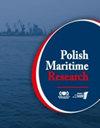等离子体化学元件双燃料燃气轮机燃烧室效率的研究
IF 2
3区 工程技术
Q2 ENGINEERING, MARINE
引用次数: 1
摘要
摘要本研究致力于提高浮式生产储油船燃气轮机发动机双燃料燃烧室工作过程效率的可能性。首次提出利用等离子体化学强化碳氢化合物燃料在双燃料燃烧室中燃烧的优势,该燃烧室可以同时使用气体和液体燃料。提出了一种等离子体化学元件燃烧室的设计方案。基于描述湍流系统中化学反应过程的微分方程组的解,考虑到等离子体化学反应产物对火焰传播过程的引发作用,建立了带有等离子体化学元件的燃烧室的连续型数学模型。考虑到添加等离子体化学元素产物时一氧化碳氧化反应活化能的降低,使用改进的碳氢化合物氧化六阶段动力学方案同时预测气体和液体燃料的燃烧特性。结果表明,等离子体化学产品的添加显著降低了火焰管出口部分的CO排放量(从25-28ppm降至3.9-4.6ppm),而所研究燃烧室的氮氧化物排放量几乎保持不变。提出了进一步的研究方向,以提高燃气轮机发动机双燃料燃烧室的工作过程效率,作为FSPO船舶发电厂的一部分。本文章由计算机程序翻译,如有差异,请以英文原文为准。
Investigation of the Efficiency of a Dual-Fuel Gas Turbine Combustion Chamber with a Plasma‒Chemical Element
Abstract The study is devoted to the possibility of increasing the efficiency of the working process in dual-fuel combustion chambers of gas turbine engines for FPSO vessels. For the first time, it is proposed to use the advantages of plasma‒chemical intensification of the combustion of hydrocarbon fuels in the dual-fuel combustion chambers, which can simultaneously operate on gaseous and liquid fuels. A design scheme of a combustion chamber with a plasma‒chemical element is proposed. A continuous type mathematical model of a combustion chamber with a plasma‒chemical element has been developed, which is based on the solution of a system of differential equations describing the processes of chemical reactions in a turbulent system, taking into consideration the initiating effect of the products of plasma‒chemical reactions on the processes of flame propagation. A modified six-stage kinetic scheme of hydrocarbon oxidation was used to simultaneously predict the combustion characteristics of the gaseous and liquid fuels, taking into account the decrease in the activation energy of carbon monoxide oxidation reactions when the products of the plasma‒chemical element are added. The results reveal that the addition of plasma‒chemical products significantly reduces CO emissions in the outlet section of the flame tube (from 25‒28 ppm to 3.9‒4.6 ppm), while the emission of nitrogen oxides remains practically unchanged for the studied combustion chamber. Further research directions are proposed to enhance the working process efficiency of a dual-fuel combustion chamber for gas turbine engines as part of the power plant of FSPO vessels.
求助全文
通过发布文献求助,成功后即可免费获取论文全文。
去求助
来源期刊

Polish Maritime Research
工程技术-工程:海洋
CiteScore
3.70
自引率
45.00%
发文量
20
审稿时长
>12 weeks
期刊介绍:
The scope of the journal covers selected issues related to all phases of product lifecycle and corresponding technologies for offshore floating and fixed structures and their components.
All researchers are invited to submit their original papers for peer review and publications related to methods of the design; production and manufacturing; maintenance and operational processes of such technical items as:
all types of vessels and their equipment,
fixed and floating offshore units and their components,
autonomous underwater vehicle (AUV) and remotely operated vehicle (ROV).
We welcome submissions from these fields in the following technical topics:
ship hydrodynamics: buoyancy and stability; ship resistance and propulsion, etc.,
structural integrity of ship and offshore unit structures: materials; welding; fatigue and fracture, etc.,
marine equipment: ship and offshore unit power plants: overboarding equipment; etc.
 求助内容:
求助内容: 应助结果提醒方式:
应助结果提醒方式:


